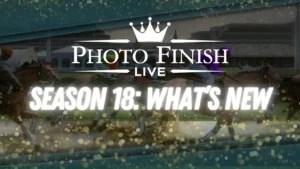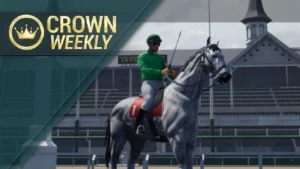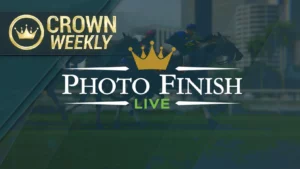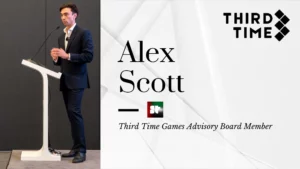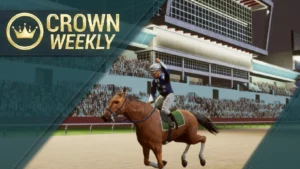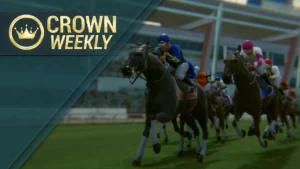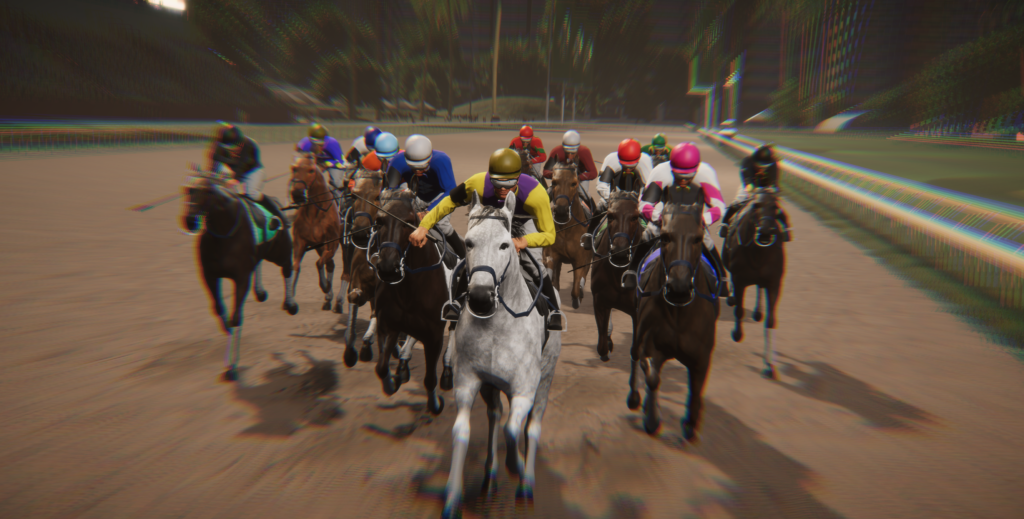
Welcome, managers, to Part 2 of the ticket match article. This is your Lead Designer, Paul Nirenberg, here to analyze the effects of matches on V.1 Gen 0. Hold onto your hats, we’re going in!
How Did Trait Matches Affect V.1 Gen 0?
One goal of the design has always been a step by step transition away from the PFP tickets and into full NFT horses. Because of this, everything that matches added to V.1 was captured in the boosts. The effect of the boosts was different for attributes and preferences; don’t worry we’ll talk about both.
For attributes, they provided a rather small improvement. While designing the system we were aware that every ticket promised a specific subgrade of horse (A-, A, A+ are all subgrades of A). That meant that every combination of boost and rank needed a unique result that fit between any two subgrades.
Because of the genetics system, even small value changes did generate better total genes, but each match gave something around ¼ of a subgrade of advantage. On the outside, that wasn’t always visible. With or without the match your horse might still have shown the same A+, and the differences in times were fractions of a second. That’s valuable in a tight race, but not the thing that will make or break a winner.
For preferences it’s a very different story. You may recall that preferences aren’t relative to the grade on the ticket. 3 Dirt is 3 Dirt, no matter what. Each match in Beta V.1 generated approximately 0.9 stars in the Gen 0 horse. That’s a lot of value for racing as well as a huge jump in better total genes. Incidentally, that’s why the Gen 0 S+ horses struggled so much. While they had the best attributes in the game, their prefs were so low that they won less often than many of the S horses . As a response to this we decided to give those tickets a small preference boost. Just enough to put them a bit ahead of the S horses instead of behind.
Matches also contributed to Better Quality for attributes (not prefs). Internally, the system rewards boosts by making sure a certain portion of their attribute value gets put into the higher value variants of genes. These horses do not receive a better total, however, they are more likely to have 2s and 0s instead of 1s. While the value here is riskier, it does give your horses potential to hit greater heights both now and down the road. Note that this is directly through the boosts, so a horse without matches could have had the same result as a matched horse if it was boosted another way.
An Analysis of Matches on V.1 Gen 0
We stated the following intent about matches in Gen 0 horses:
- Matches are good
- Rarity is better
- Matches with rarity is best
To better understand whether or not the current design worked as intended, we decided to do a little experiment. We took every Gen 0 ticket from Beta V.1 and checked what it would look like without the effect of its matches. As expected, the difference was stronger in some places than in others.
This is a graph of the average attribute value of all the Gen 0 horses that had matches. The blue bars indicate values with matches included; the red bars are values with the matches removed. The bounds of the graph are one subgrade.
(We’ve had to use a rather awkward percent scale in order to protect the system math.)
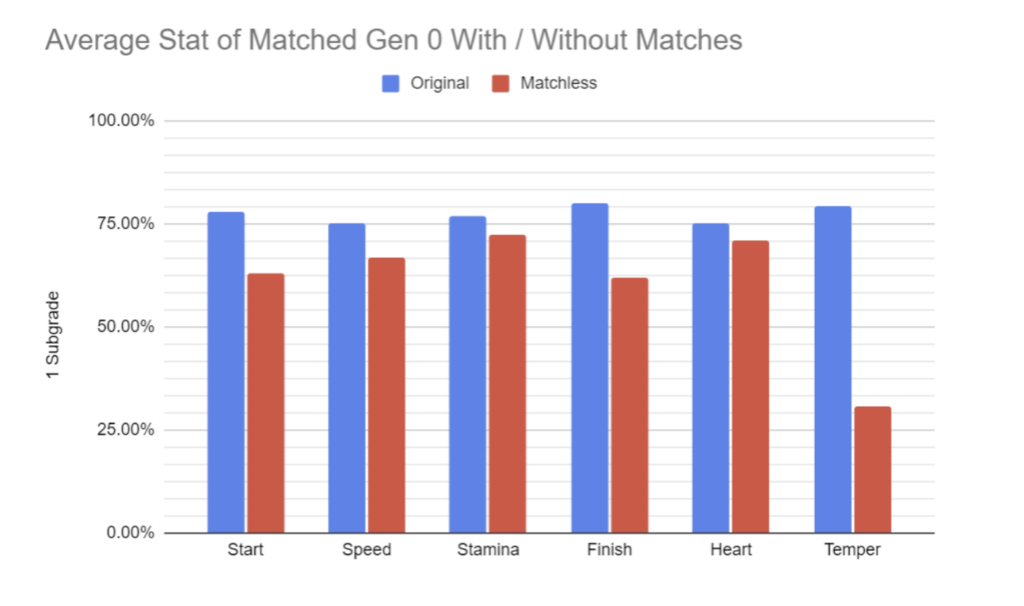
While matches clearly had an effect on attributes, the effect was quite small. Even the largest change fit between a single subgrade. Rarity in the form of ticket grade and boost count carried the majority of the value.
Preferences were another matter. Below is a similar graph comparing Gen 0 preference values. The bounds of the X axis are 2 Stars because the difference couldn’t fit on a scale of one.

Without matches in the system, there would not be a single Gen 0 horse with Condition over 1.5 stars. While we would ensure the existence of the raw genes necessary to breed up, they would be scarce enough that individual genes could go extinct. It would take generations for the population to recover to the point of the current Gen 0 crop.
Did we meet our promised match design in Gen 0?
Matches clearly had a strong impact on preferences. In horses with similar attributes, a difference in preferences matters a lot. Many players have noticed the value of good preferences because races are often run by horses close in grade and bred for the same race type. Without matches, preference genetics as a whole would struggle, so clearly matches had value.
However, while the effect on preferences is significant, the effect on attributes was absolutely minimal. Pure rarity carried the vast bulk of attribute value by determining the grade of the ticket as well as a larger portion of the boost count. Preferences do allow a horse to keep up with some competition in higher grades, but an A+ with good preferences will beat an A with good preferences a majority of the time.
Let’s recap:
If an A horse with bad prefs races an A horse with good prefs, it will likely win => Matches are good.
If an A horse with bad prefs races a B horse with good prefs, it will likely win => Rarity is better.
- If two horses of any similar grade race and one has better prefs, that one will likely win => Matches with rarity are best.
From this we feel we did succeed in our Gen 0 promise. However, the big question is future generations.
Sadly, that’s all the time we have for part 2. I’ll see you in part 3 where we analyze the generations after 0 in Beta V.1 and share a change we’re making in V.2.
